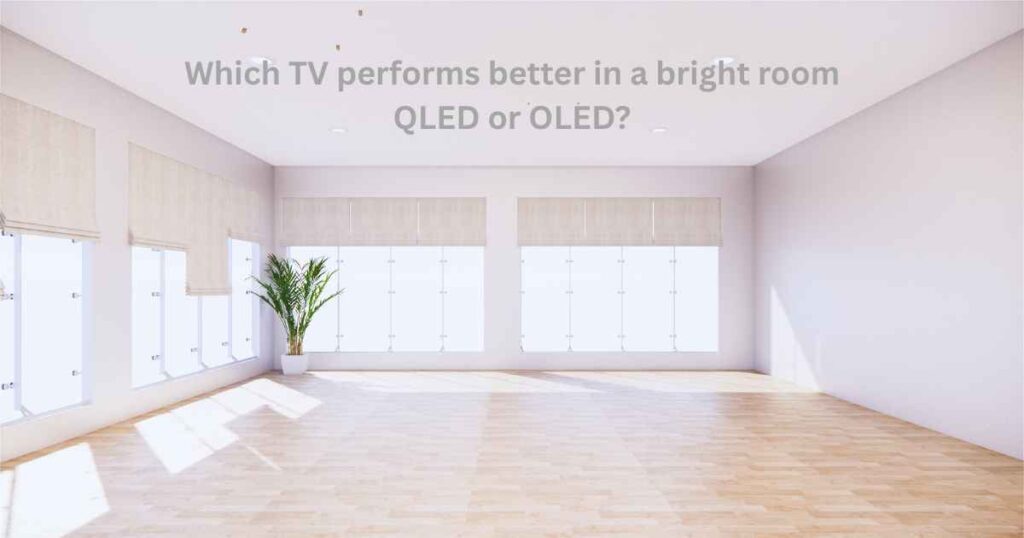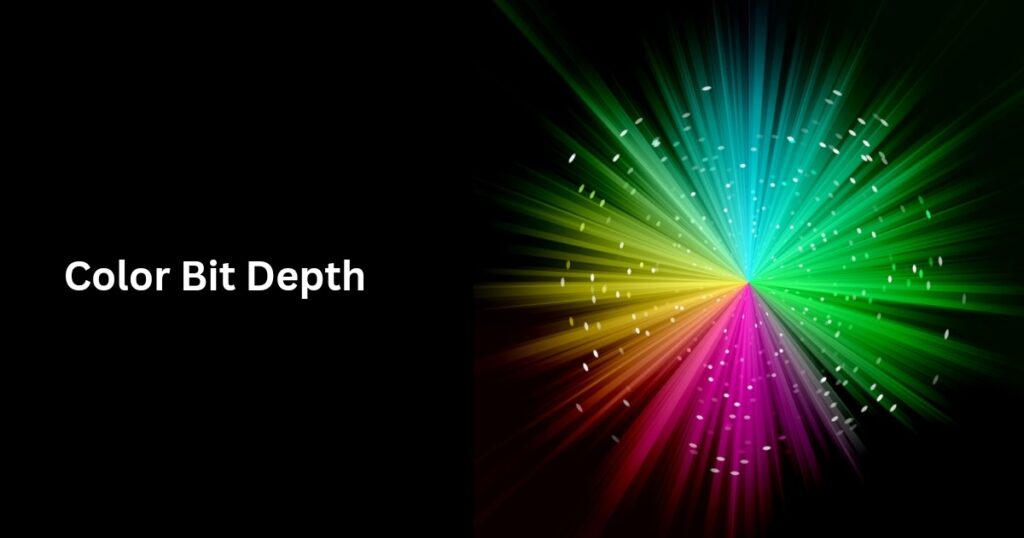QLED vs OLED: Which TV performs better in a bright room?

For judging the performance of a TV in a bright room, the most important factors that you should consider are its SDR and HDR brightness, along with its ability to handle reflections.
While viewing angles and contrast also play a role, brightness and reflection management are the key elements for strong performance in well-lit environments.
So, between QLED and OLED, which is better suited for a bright room?
Let’s find out by discussing the above factors in detail.
SDR Brightness
Premium QLED TVs equipped with mini-LED backlighting excel in SDR brightness, thanks to their dense array of numerous small LEDs, allowing them to reach impressive brightness levels in SDR.
This ability helps them effectively counter glare, giving them a significant edge over most OLED models which have only a limited brightness.
The higher the brightness, the more engaging and immersive the viewing experience becomes when it comes to well-lit environments.
HDR Brightness
Higher HDR brightness in a TV causes the highlights appear more vivid and lifelike, enhancing the overall HDR experience in bright rooms where glare can otherwise diminish image quality.
QLED TVs with mini-LED backlighting take full advantage of this.
Their hundreds or even thousands of local dimming zones allow for great contrast, some models nearing OLED-level quality with minimal blooming.
This boost in contrast over normal QLEDs adds depth and realism to HDR scenes.
Additionally, the mini-LED backlight enables these TVs to reach extremely high peak brightness, making HDR highlights stand out even under strong ambient light.
When paired with quantum dot technology, which expands the color gamut, these TVs deliver a high color volume—meaning colors stay rich and accurate even at high brightness levels.
As a result, HDR content on these QLED TVs looks exceptionally vibrant and dynamic, with bright highlights and rich colors that truly pop, even in well-lit rooms.
QD-OLED TVs too offer high peak HDR brightness, comparable to that of QLEDs with mini-LED backlighting.
Simultaneously, they maintain the core strength of OLED technology—true blacks with zero blooming, thanks to their self-emissive pixels.
By combining this with quantum dot technology, QD-OLEDs achieve a wide color gamut and high color volume.
This results in outstanding HDR performance, where colors appear vibrant and highlights remain bright and detailed in the well-lit environments.
Reflection Handling
A TV with a high peak brightness is needed for handling reflections and fighting glare in the room.
Other than that, the screen coating of the TV also matters much as far as reflection handling is concerned.
If you put a bright light source in front of a TV with glossy finish, it will be visible on the screen just like it is seen in a mirror.
However, the contrast in the remaining areas of the display would remain good and intact.
On the other hand, in the same case with a TV having a matte finish, you will almost not see the reflection of the light source.
It is because the TV diffuses the light throughout the screen to compensate for eliminating the reflection.
However, due to this, the black levels would appear slightly raised leading to reduced contrast.
This somewhat raised black level may not be good for dark room viewing due to the loss of contrast and dark highlights.
However, in a bright room with a bright TV, this should hardly matter as the high peak brightness of the TV would not let feel the slight loss in contrast.
Contrast and Viewing Angles
If you have the habit of watching TV in a dark room, you will appreciate the one having high contrast.
It will show remarkable clarity and intensity of highlights in darker scenes.
If you are a passionate gamer, an OLED TV is a top choice thanks to its near-instant response time, around 0.1 ms, which virtually eliminates screen tearing, making it ideal for fast-paced gaming.
However, for viewing in a bright room, the priorities shift.
In this environment what matters most is bright highlights, vibrant colors, and effective reflection handling.
This is where QLED TVs with mini-LED backlighting excel. They offer exceptional brightness, high contrast, and a wide color gamut, resulting in vibrant images that remain clear and colorful in well-lit rooms.
Now, coming to viewing angle, it becomes a critical factor when people are seated across a wide sofa or in a large living room setup.
OLED TVs are the first choice here, as they maintain consistent color and brightness from nearly any angle, making them ideal for group viewing where not everyone sits directly in front of the screen.
Which TV to buy for a bright room: QLED or OLED?
In conclusion, a QLED TV with a mini-LED backlight is the best choice for bright room viewing.
It delivers excellent contrast, high color volume, and bright, vibrant visuals that stand out even under strong ambient lighting.
When equipped with a matte screen finish, it can drastically reduce reflections and glare, making the viewing experience even more comfortable in well-lit rooms.
These TVs also offer contrast levels approaching that of OLEDs, thanks to their advanced local dimming technology.
They excel in both SDR and HDR brightness.
In fact, the brightest QLED models can achieve higher peak brightness in SDR than any OLED.
Another advantage is that QLEDs don’t suffer from burn-in or pixel degradation, which can be a concern with OLED panels, when displaying static content over long periods or when driven at high brightness respectively.
Last but not the least, a QLED TV with mini-LED tech is generally more affordable than high-end QD-OLEDs or MLA-based OLEDs, the only OLED types which may match its performance in bright rooms.
This makes the mini-LED-backlit QLED TVs a highly practical and cost-effective choice for anyone prioritizing bright-room performance.


